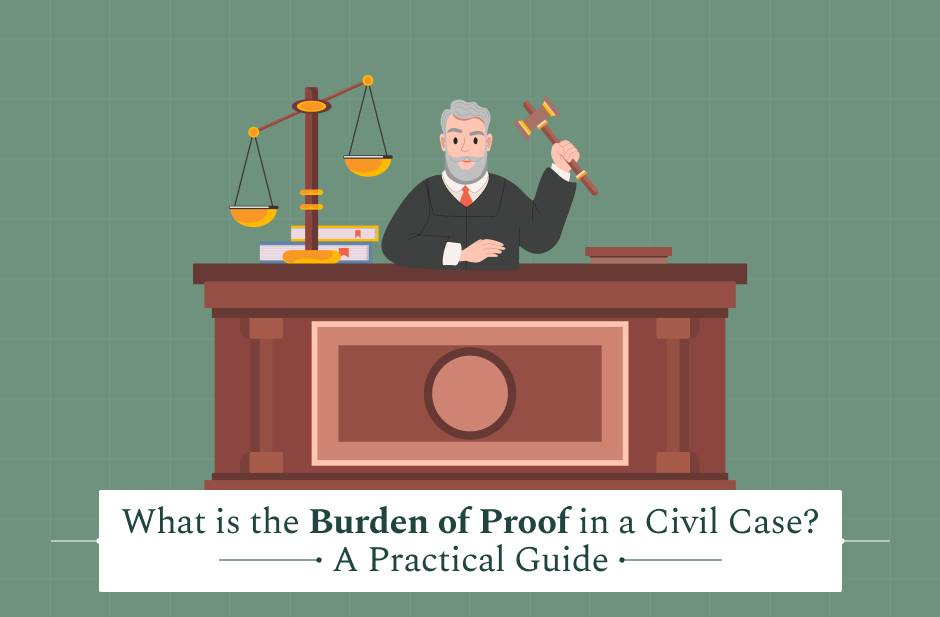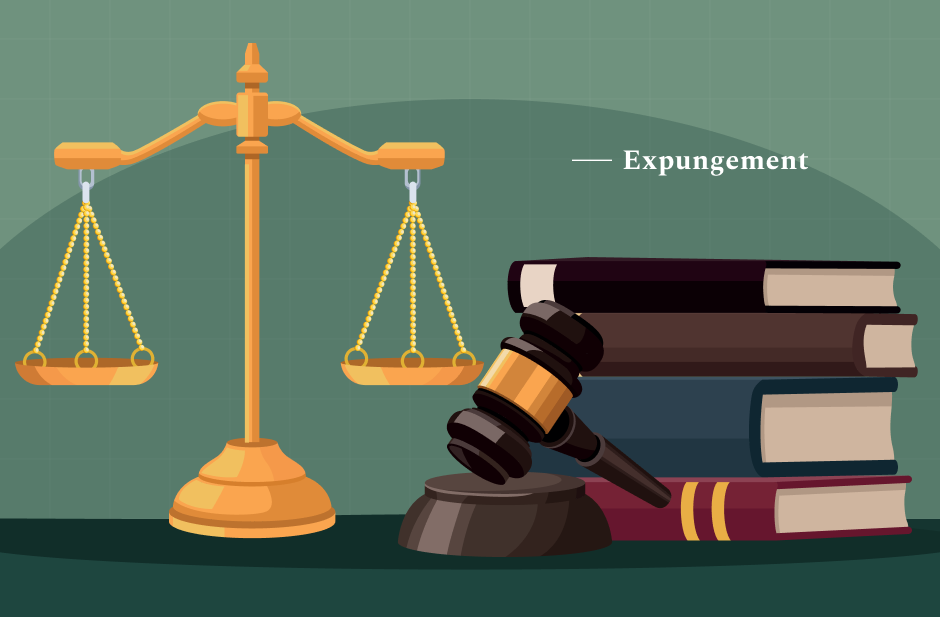What is the burden of proof in a civil case? Well, not just the “burden of proof definition”, but the Court in itself is quite confusing. You hear words like “guilty beyond a reasonable doubt” and “preponderance of the evidence.”1 If you’re in a lawsuit, you need to know precisely what the court requires you to prove.
This article offers you a simple-to-apply summary on “what is the burden of proof in a civil case”. We will cover what is burden of proof, its types, and how recent precedents define it.
Additionally, we also talk about the distinction between the two legal burdens that is part of the burden of proof definition. We’ll also talk about the most important standards of evidence here. So, let’s begin.
What Is The Burden Of Proof In A Civil Case – Introduction And Importance
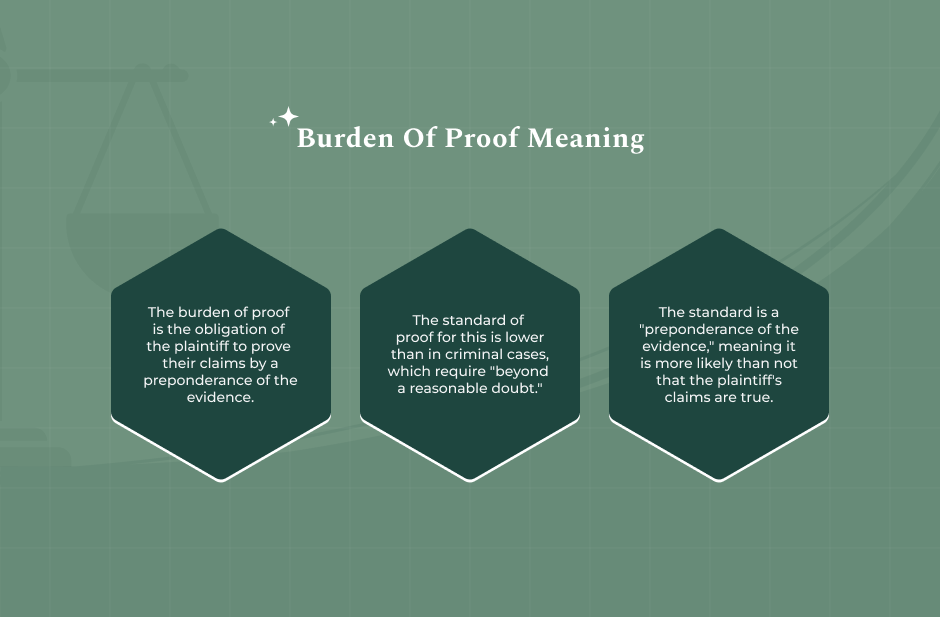
Every argument in law is born out of a single claim. The plaintiff holds the defendant liable for money or some action. However, the court of law can’t take that claim on face value. There has to be sufficient evidence to support facts.
This is the of proof definition in its judicial sense. It is the very essence of justice in our justice system. Without this, anyone could sue someone without any evidence. So, knowing what is the burden of proof in a civil case is priceless for any litigant.
“Burden of Proof
The claimant must prove that, on the balance of probabilities, the defendant has been negligent or has breached their statutory duties. Proof on the balance of probabilities means proof that it is more likely than not. If the claimant’s evidence is equally consistent with the presence or absence of Negligence or breach of the duty then the claim will fail.”
Key Concepts- Burden Vs. Standard Of Proof
The term “burden of proof” literally refers to two different requirements. You must be able to identify them. You must also realize how the civil standard of proof for a claim differs from the criminal standard.
The Two Burdens Of Proof
What is the burden of proof in a civil case? Well, let us find out what does burden of proof mean through two scenarios.
1. Burden Of Production (Or The Evidentiary Burden)
It is the burden to produce enough evidence to place an issue into consideration by the court. The burdened party must produce enough facts to allow a judge or jury reasonably to presume the claim true. However, if they fail to get over this first barrier, the court disposes of the case.
2. Burden Of Persuasion
So, what is the burden of proof in a civil case? It is the burden of persuasion. This is the last obligation to convince the judge or the jury. Here, the party must convince the finder of fact that his account of things is more plausible than the alternative. Moreover, this burden never shifts extensively throughout the trial.
Consequently, what burden of proof is served by these two obligations. One of them is duty to provide evidence. Thus, the other one is duty to convince.
What Is Burden Of Proof- The Standard Of Proof
The “standard of proof” refers to how persuasive the evidence must be.
Criminal Cases
The standard is “beyond a reasonable doubt”- a very, very high level.
Civil Cases
Here, the standard is generally the Preponderance of the Evidence.
- The “preponderance of the evidence” is the most direct answer to the question, “what is the burden of proof in a civil case”.
- In civil court, one does not have the burden of proof to show that their claim is true. They just need to show that their claim is the more likely one than not.
- Thus, we can think of burden of proof as a set of scales.
- Let’s say that the plaintiff’s claim weighs only 50%. In such case, the plaintiff loses. Therefore, their evidence should weigh over 50% to win.
The claim maker has to provide enough proof to tip the balance in their favor.
Who Has The Burden Of Proof In Civil Cases?
The general principle is very straightforward. It says that the claimant, or plaintiff, gets to go first with what is the burden of proof in a civil case.
Initial Burden (Prima Facie Case)
The plaintiff will then have to prove a prima facie case.
- That is, they must produce enough evidence to show their cause of action in law. Therefore, they will, then, satisfy their Burden of Production.
- For example, if you are claiming negligence of Party A, you will have to provide evidence of a duty of A, first. Next, you’ll have to show A’s breach of duty, its causation, and the damage from the breach.
Rebuttal And Tactical Burden Shifts
The burden of proof is relative. This means that it can shift from one party to another during a trial. However, such a shift is temporary.
- For example, once the plaintiff has established the initial burden of production, the defendant will subsequently have the burden.
- Now, the defendant has a tactical burden of production to generate evidence refuting the plaintiff’s case. Or they may present an affirmative defense (e.g., statute of limitations or self-defense).
The defendant is not necessarily in a position to win the case but merely to generate enough evidence to dispose of the plaintiff’s claim.
Ultimate Burden Of Persuasion
While the tactical burden can be shifted to the defendant to make evidence, Burden of Persuasion always remains on the plaintiff. The plaintiff always has to convince the judge or jury that its material claim is real by a preponderance of evidence.
Civil Standards Of Proof
While most civil cases follow the standard of preponderance, there are some claims for which a greater standard is required.
Preponderance Of The Evidence
The general standard of proof for virtually all civil suits.
- This includes contract, personal injury (torts), and general negligence.
- Answers to what is the burden of proof in a civil case aligns with this standard.
Clear And Convincing Evidence
This is a middle level standard.
It requires the evidence to be much more likely to be true than not (75% likely).
- Courts require this greater standard in some, significant civil cases.
- They include termination of parental rights, civil commitment, or fraud charges.
Presumptions, Inferences & Burden Shifts
Legal presumptions can have profound impacts upon what is the burden of proof in a civil case.
- A presumption is a principle of law by which the court will presume a fact unless the other party brings evidence to prove the contrary.
- Thus, the statute assumes a letter to a proper address was actually received. So, the Burden of Production now lies on the other side to prove it was never received.
- Presumptions do not change the final Burden of Persuasion. However, they make the final burden much simpler for the party which benefits from the presumption.
Burden Of Proof In A Civil Case- Practical Challenges & Common Pitfalls
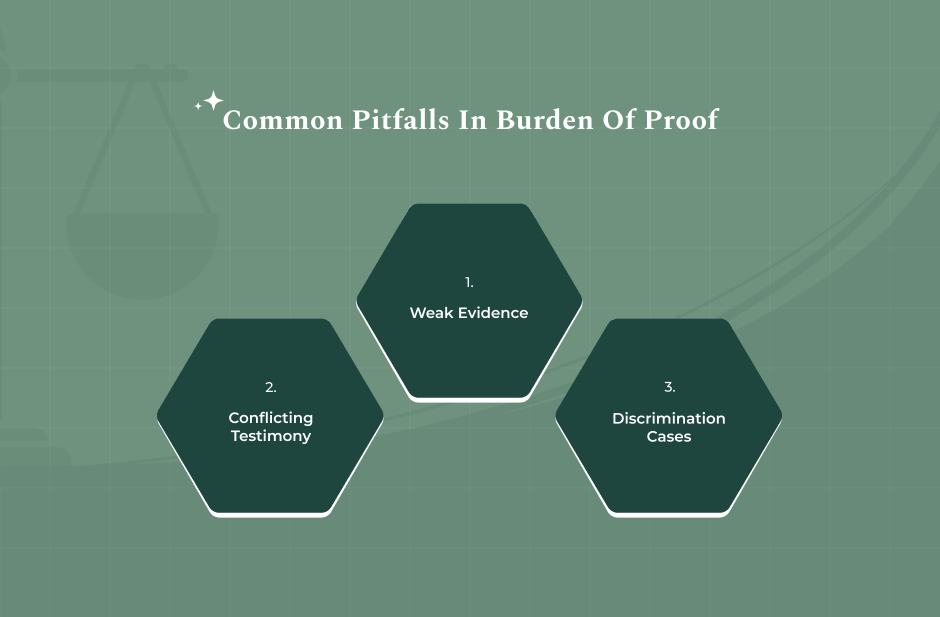
Placing the burden of proof in a civil case would prove very hard to do in the real world in these cases.
Weak Evidence
Cases lose because there is no concrete, objective evidence. Without documentation or credible witnesses, even a good case loses.
Conflicting Testimony
Credibility is key. Therefore, a jury must decide which witness is most credible even if they both seem sincere.
Discrimination Cases (The McDonnell Douglas Framework)
Employment discrimination cases, particularly in the US, have an established formal burden-shifting framework. This is established by the ruling in Texas Department of Community Affairs v. Burdine (U.S. Supreme Court, 1981).
Prima Facie Case- The First Step
The plaintiff makes an initial showing.
Now, the employer has to assert a legitimate, non-discriminatory reason. Next, the burden shifts to the plaintiff to prove that the employer’s reason was a pretext for discrimination.
Thus, this framework very well shows what is the burden of proof in a civil case.
Meet The Burden- Tips & Best Practices
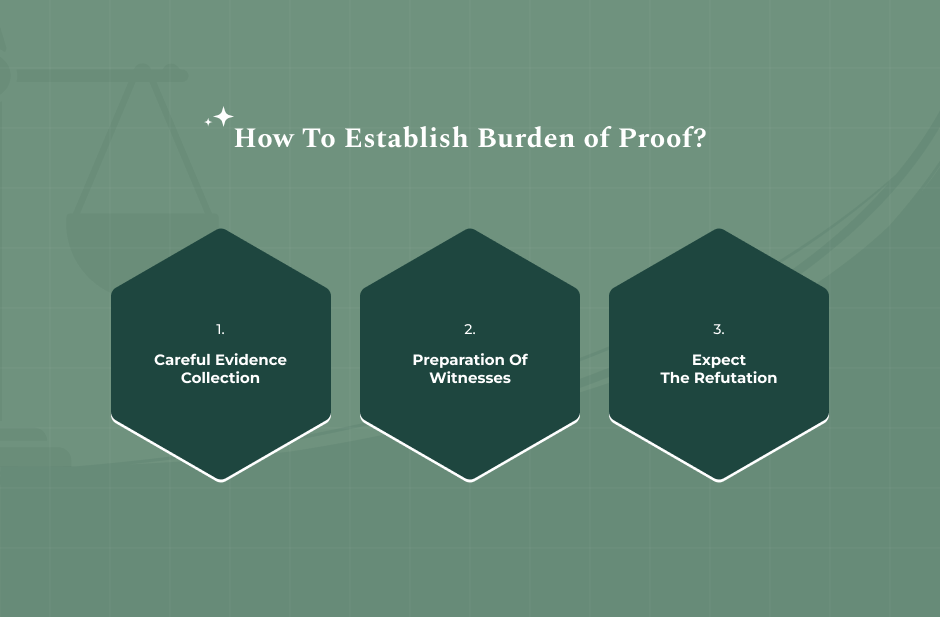
Here are tips on how to prove the burden of proof in a civil case.
Evidence Collection With Care
Collect and maintain thoroughly all communications like emails, texts, and photos. Never rely on memory.
Preparation Of Witnesses
Identify and prepare witnesses who can directly provide help for every detail of your claim. Direct, firsthand observation is best.
Expect The Refutation
Assume the opposite side to determine the vulnerabilities. Thus, we must anticipate and expect evidence in advance to disprove and refute their possible defenses.
Use Experts
Utilize competent expert witnesses in scientific fields such as medicine or finance. Consequently, this will prove essential in establishing the preponderance standard.
Frequently Asked Questions On The Burden Of Proof
We will now note down the answers to what is the burden of proof of the plaintiff in a civil case. Hope these help!
The standard is typically the preponderance of the evidence, so the claim has to be more likely than not (51% probable) to be true.
The duty has the Burden of Production (gathering enough initial evidence) and the ultimate Burden of Persuasion (persuading the court).
The plaintiff loses. They do not establish the burden of proof in a civil case because they must be more than 50%.
Extremely serious cases, like cases for fraud or termination of parental rights, commonly use this higher standard [Addington v. Texas].
No, the ultimate Burden of Persuasion still lies with the plaintiff. But the Burden of Production is on the defendant. They can come up with a rebut or to prove an affirmative defense like self-defense.
The ruling lowered the initial burden of proof in some Title VII reassignment cases to just “some harm” instead of “substantial harm”.
The plaintiff must establish all four elements of negligence: Duty, Breach, Causation, and Damages by a preponderance of the evidence.
Intentionally destroying evidence will allow the jury to make a negative inference. Thus, this will enable the opposing party to bear the burden of proof by establishing that the destroyed evidence would have been incriminating.
No. An acquittal on a criminal charge does not end a civil case because the burden of proof is less in a civil case. Conversely, a criminal conviction in a civil case acts as proof of liability.
The U.S. “preponderance of the evidence” in the U.K. is the “balance of probabilities” terminology.








